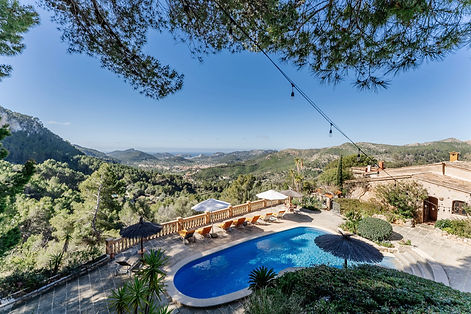OUR STORY
HISTORY
Evidence of Son Viguet can be traced as far back as 1625 depicted on historical maps, yet its true age remains a mystery. The earliest records indicate that the property began as a shepherd's hut, consisting of square piles of rock walls strategically positioned to overlook the two valleys below. At some point in the years that followed, this refuge evolved into an olive press and grain mill, serving as a vital hub for farmers from nearby lands to bring their harvest for pressing into olive oil and flour. The agricultural era was interrupted by the tumultuous Spanish Civil War from 1936 to 1939, leading the property to years of abandonment and neglect.
In the early 1970s, a Canadian family arrived on the island drawn by its landscape and cultural heritage. After exploring the island, they came upon the ruins of an ancient finca—accessible only by a steep, dirt road and surrounded by timeless views of mountains and sea.
Despite its remote location and disrepair, the family saw the possibility in the stone walls and terraces. Captivated by the setting and the silence, they began a long-term restoration journey rooted in care and continuity.


NOW
Over the following years, the family worked together to bring the property into modern use while retaining its essential character. In the decades since, further care has gone into the home to preserve its original materials, expand its utility, and maintain its spirit as a lived-in and loved space.
Now located within a UNESCO World Heritage Site, the Serra de Tramuntana, the home provides 360-degree views of mountain and sea. The house continues to be quietly shared through long stays and exchanges with those who value time, heritage, and place.